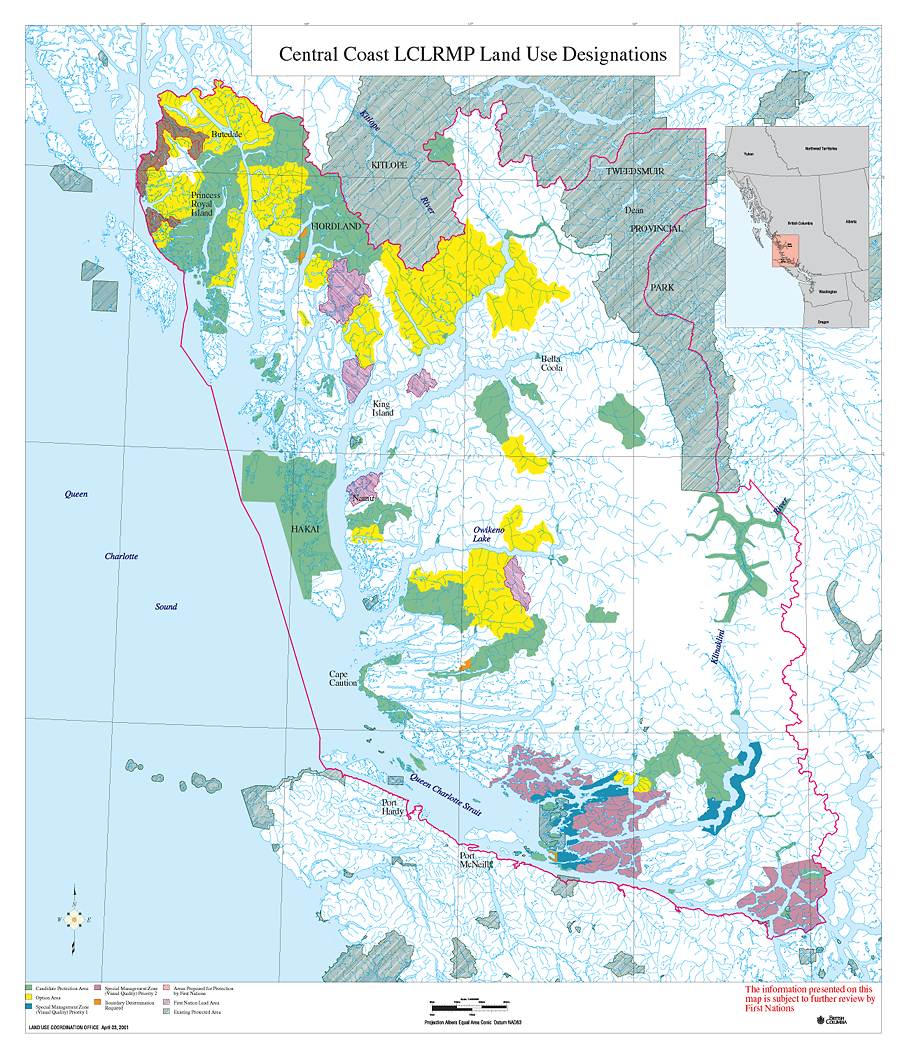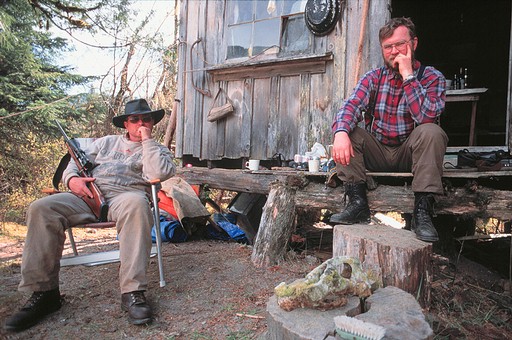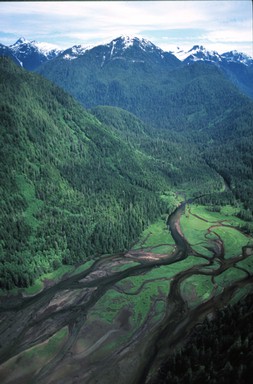Effectiveness of GIS in assesing

 GRIZZLY BEAR HABITAT
GRIZZLY BEAR HABITATIn the Central Coast of Brittish Columbia.

 GRIZZLY BEAR HABITAT
GRIZZLY BEAR HABITAT The Ministry of Sustainable Resource Management
(MoSRM) is currently developing a Land and Resource Management Plan
(LRMP) for the Central Coast of British Columbia. This is a broad
plan for how the land and resource will be used in the future, representing
an administrative approach that is committed to 'balancing' the perceived
interests of various stakeholders (Jeo, et al, 1998). The plan area
covers 3.8 million ha and is home to over 4,400 people, mainly First Nations.
The Ministry of Sustainable Resource Management
(MoSRM) is currently developing a Land and Resource Management Plan
(LRMP) for the Central Coast of British Columbia. This is a broad
plan for how the land and resource will be used in the future, representing
an administrative approach that is committed to 'balancing' the perceived
interests of various stakeholders (Jeo, et al, 1998). The plan area
covers 3.8 million ha and is home to over 4,400 people, mainly First Nations.
 Grizzly Bears are listed as Big Game under
the provincial Wildlife Act. All grizzly bear hunting is regulated
through the Limited Entry Hunting (LEH) for residents and Guide Outfitter
Quotas (GOQ) for non-residents. Appropriate levels determined by
wildlife biologists based on population models reflecting data from compulsory
hunter returns, field inventories and research and the Fuhr-Demarchi habitat
suitability models. The calculation of current habitat suitability
is based upon a GIS model that assigns densities to various habitat types
by using classes that are scaled against a benchmark density derived
from known research areas such as the Khuzamateen or Flat Head studies.
The estimated impacts of human-caused mortality are then deducted from
the habitat potential to arrive at a “stepped down” population est. range
(Austin, 2002).
Grizzly Bears are listed as Big Game under
the provincial Wildlife Act. All grizzly bear hunting is regulated
through the Limited Entry Hunting (LEH) for residents and Guide Outfitter
Quotas (GOQ) for non-residents. Appropriate levels determined by
wildlife biologists based on population models reflecting data from compulsory
hunter returns, field inventories and research and the Fuhr-Demarchi habitat
suitability models. The calculation of current habitat suitability
is based upon a GIS model that assigns densities to various habitat types
by using classes that are scaled against a benchmark density derived
from known research areas such as the Khuzamateen or Flat Head studies.
The estimated impacts of human-caused mortality are then deducted from
the habitat potential to arrive at a “stepped down” population est. range
(Austin, 2002).  The Sierra Club,
the Raincoast Society, Round River, the Nature Conservancy Canada, and
the Craighead Institute are all engaging in various re-mapping, education
and advocacy campaigns in the central coast around issues of old growth
forest and grizzly bears. A few of these ENGO’s have been involved
with strategies of developing parallel GIS analyses and challenging the
government’s decisions both by direct action and litigation. In
1996 the Round River institute was commissioned to develop a Conservation
Area design for the central coast in order to delineate and prioritize
areas for protection and restoration based on current scientific knowledge,
tenants of conservation biology and the precautionary principle (Jeo,
1998). A key element of their analysis was using GIS to determine high
grizzly bear habitat and to use this as a basis their conservation area
design. A future study could compare resultant data and maps from
these analyses because visual examination reveals that watersheds ranked
high do not always match. A project (Norheim, 2002) conducted around
old growth forest mapping in the Pacific Northwest revealed that neither
mapping strategy is necessarily more accurate as different methodologies
were used, but the presence of a second analysis itself is important.
The Sierra Club,
the Raincoast Society, Round River, the Nature Conservancy Canada, and
the Craighead Institute are all engaging in various re-mapping, education
and advocacy campaigns in the central coast around issues of old growth
forest and grizzly bears. A few of these ENGO’s have been involved
with strategies of developing parallel GIS analyses and challenging the
government’s decisions both by direct action and litigation. In
1996 the Round River institute was commissioned to develop a Conservation
Area design for the central coast in order to delineate and prioritize
areas for protection and restoration based on current scientific knowledge,
tenants of conservation biology and the precautionary principle (Jeo,
1998). A key element of their analysis was using GIS to determine high
grizzly bear habitat and to use this as a basis their conservation area
design. A future study could compare resultant data and maps from
these analyses because visual examination reveals that watersheds ranked
high do not always match. A project (Norheim, 2002) conducted around
old growth forest mapping in the Pacific Northwest revealed that neither
mapping strategy is necessarily more accurate as different methodologies
were used, but the presence of a second analysis itself is important.
